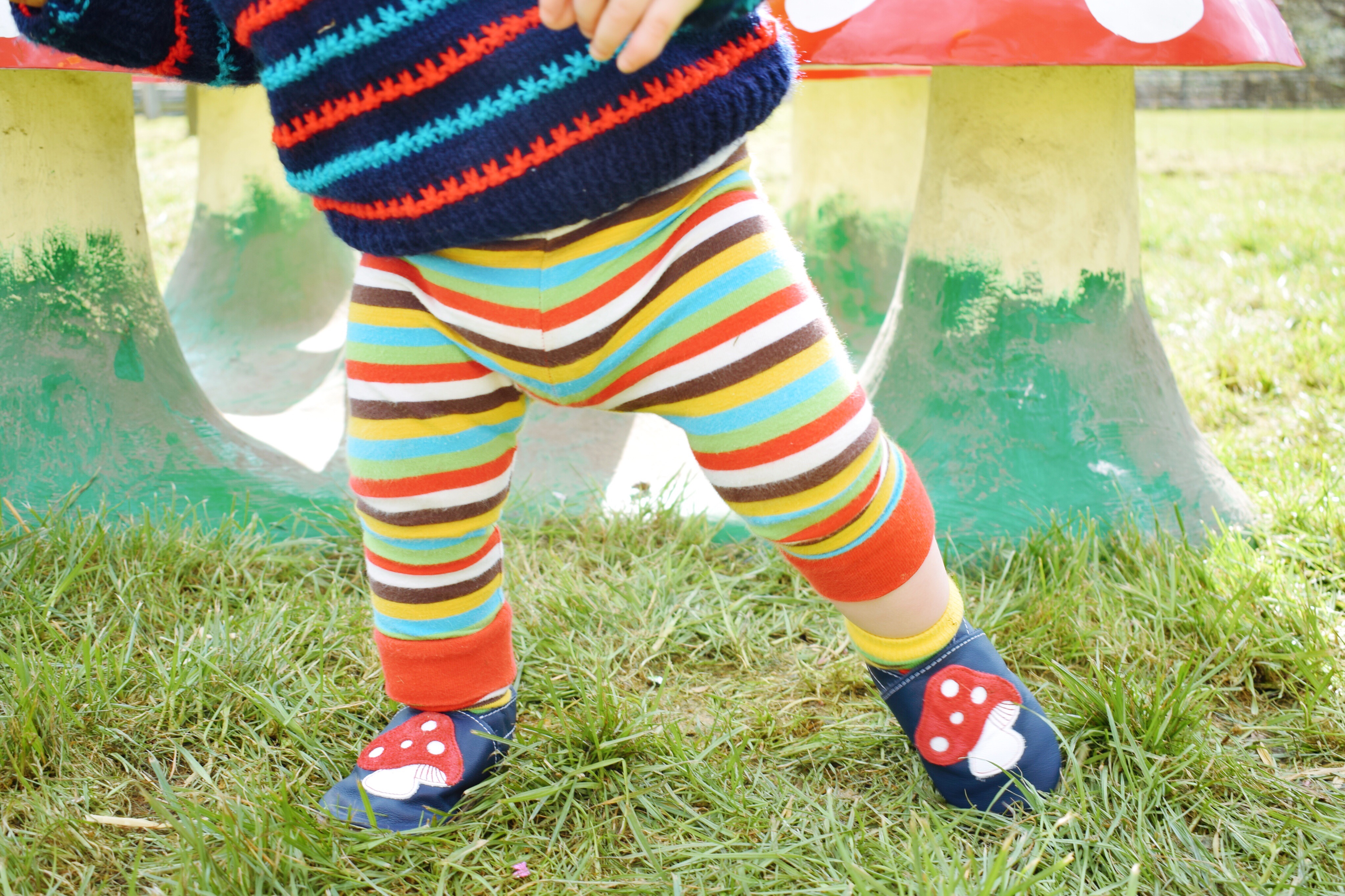When Do Babies Start Cruising?

Watching your baby reach new developmental milestones is one of the highlights of parenting. One of these key milestones is "cruising," a term used to describe when a baby starts to move around while holding onto furniture or other objects for support. But when do babies start cruising? And how can you ensure they cruise safely around the house? This guide will give you all you need to know about this exciting stage in your baby’s development.
When Do Babies Start Cruising Furniture?
Cruising typically begins when babies are between eight and 12 months old, though this can vary widely from one child to another. If your child has been early to achieve the key physical development milestones, then this stage between crawling and independent walking will typically come sooner, as early as seven months. Others may take a bit longer, starting closer to 13 or 14 months. Anytime in between these ranges is perfectly normal.
So, when do babies start cruising furniture specifically? And when might you need to ensure that sharp corners and less stable objects are out of reach? This usually happens once they have mastered pulling themselves up to stand and are beginning to feel more confident on their feet. Cruising furniture is a sign that they are building the strength and balance necessary for independent walking.
Signs Your Baby is Ready to Start Cruising
Understanding when babies are ready to start cruising can help parents prepare and support them during this exciting stage. Here are some key signs to look out for:
- Pulling Up to Stand: Before a baby can start cruising, they need to be able to pull themselves up to a standing position using furniture or other stable objects. This usually happens around eight to nine months. If you notice your baby frequently pulling themselves up, they might soon start cruising.
- Standing with Support: Babies who are ready to start cruising can usually stand while holding onto something for support. They may not have the balance to stand without support for long, perhaps just a couple of seconds, but they are comfortable standing with the help of furniture.
- Shifting Weight from One Foot to Another: A crucial skill for cruising is the ability to shift weight from one foot to the other. If your baby starts doing this while holding onto furniture, it is a good indication that they are setting sail to cruise.
- Taking Side Steps: When babies start to feel confident standing, they may begin to take small side steps while holding onto furniture. This is one of the first signs of cruising. These steps may be small and tentative at first, but they are an important part of developing the coordination needed for cruising.
- Reaching for Nearby Objects: If your baby starts reaching for nearby objects or toys while standing and holding onto furniture, this is a sign that they are trying to move around. This curiosity and desire to explore their surroundings may lead to cruising, and it’s all part and parcel of this wonderfully developmental milestone.
What to Avoid When Your Baby Starts Cruising
While encouraging cruising, it’s equally important to be aware of potential hazards and avoid certain behaviours:
- Avoid Unstable Furniture: Ensure that all furniture used for cruising is stable and cannot easily tip over. Avoid letting your baby cruise around furniture with wheels, such as moveable desk chairs as these can move unexpectedly and cause falls.
- Don’t Rush the Process: Every baby develops at their own pace. Whilst some babies may start cruising earlier, others may take more time. Avoid pushing your baby to cruise before they are ready, as this can lead to frustration or accidents. Focus on providing a supportive environment and let them develop at their own pace.
- Keep Floors Clean and Clear: Ensure that floors are clean and free of any obstacles that could pose a tripping hazard. Small objects, toys, or even loose rugs can be dangerous for babies who are just learning to cruise.
- Supervise Closely: Babies can be unpredictable, especially when they are exploring their newfound mobility. Always supervise your baby closely when they are cruising to prevent falls or accidents. This is particularly important if they are cruising near stairs, sharp corners, or other potential hazards.
The Importance of Pre-Walker Shoes for Cruising Babies
As babies begin to explore their surroundings by cruising, it’s a great time to consider their footwear. When babies start cruising furniture and moving around more frequently, having the right shoes can make a significant difference in their comfort, stability, and safety. This is where pre-walking shoes come into play.
Pre-walker shoes, often known as cruising shoes, are specifically designed for babies who are just beginning to stand, take side steps, and move around while holding onto furniture. Unlike regular shoes, pre-walker shoes are crafted to protect and support your baby's delicate feet as they gain confidence and mobility during the cruising stage. These shoes are typically made from soft, flexible materials that allow your infant to comfortably feel the ground beneath their feet for natural movement and development.
What to Think About When Selecting Pre-walker Shoes
When looking for pre-walker shoes, here are some pointers to consider:
- Protection: As babies start cruising, their feet are exposed to various surfaces, some of which may be rough, cold, or potentially hazardous. Pre-walker shoes provide a layer of protection against these surfaces, helping to prevent injuries such as cuts, scrapes, or bruises. They also shield the feet from potential dangers like sharp objects or uneven surfaces.
- Support and Stability: While cruising, babies are still developing their balance and coordination. Pre-walker shoes are designed to offer gentle support to help stabilise their feet without restricting natural movement. They provide a secure grip on the floor, which helps prevent slips and falls, giving babies the confidence they need to explore their surroundings.
- Encouraging Natural Foot Development: The soft and flexible soles of pre-walker shoes mimic the natural feel of walking barefoot. This is crucial for allowing babies to strengthen their foot muscles and develop proper foot arches. Rigid or stiff shoes can hinder this natural development, which is why choosing the right type of footwear at this stage is vital.
- Comfort: Comfort is key for little ones who are just beginning to cruise. All Inch Blue shoes are made from soft, breathable materials that keep the feet comfortable and allow for plenty of room for growing feet.
What Comes After Cruising?
Cruising is an essential step in a baby’s journey toward independent walking. After mastering cruising, babies will gradually gain more balance and confidence, eventually taking their first steps without holding onto anything. This transition usually happens anywhere between eight to 12 months, but it’s important to remember that every child is unique and develops at their own pace.
More From Inch Blue
Inch Blue is home to an incredible selection of pre-walker baby shoes. Our varied and playful ranges are suitable for baby girls and baby boys. Whether you’re looking for baby girl shoes with cute floral designs or maybe some baby boy shoes featuring fun dinosaur motifs, there’s a perfect pair for every little personality.
For more information about our adorable collection of baby shoes, feel free to contact us today - our team will be happy to help.
